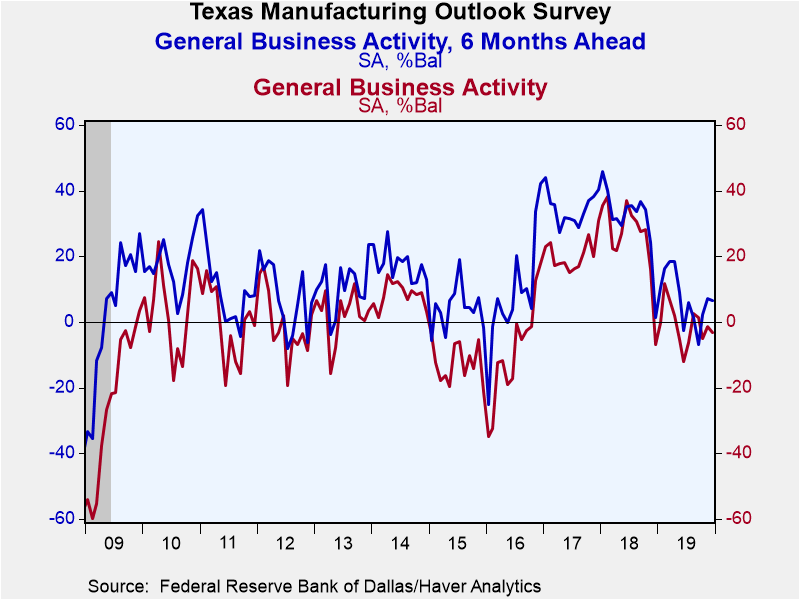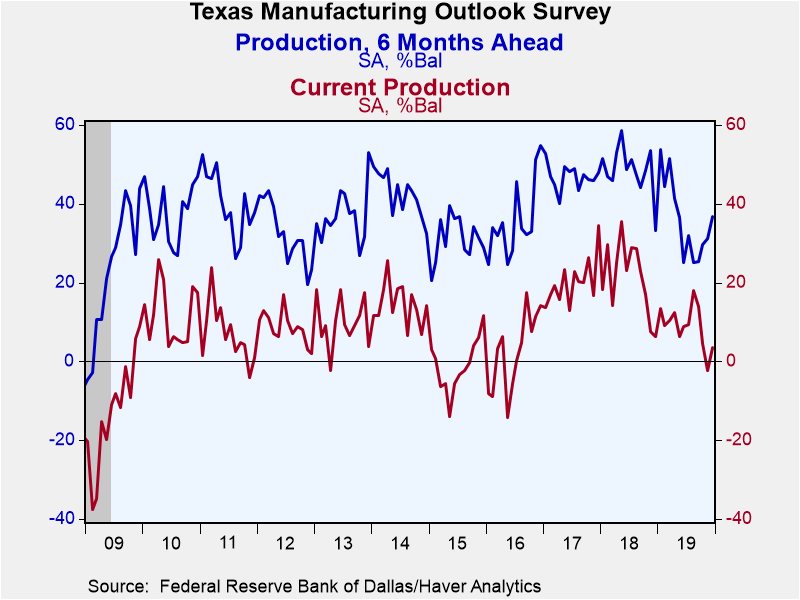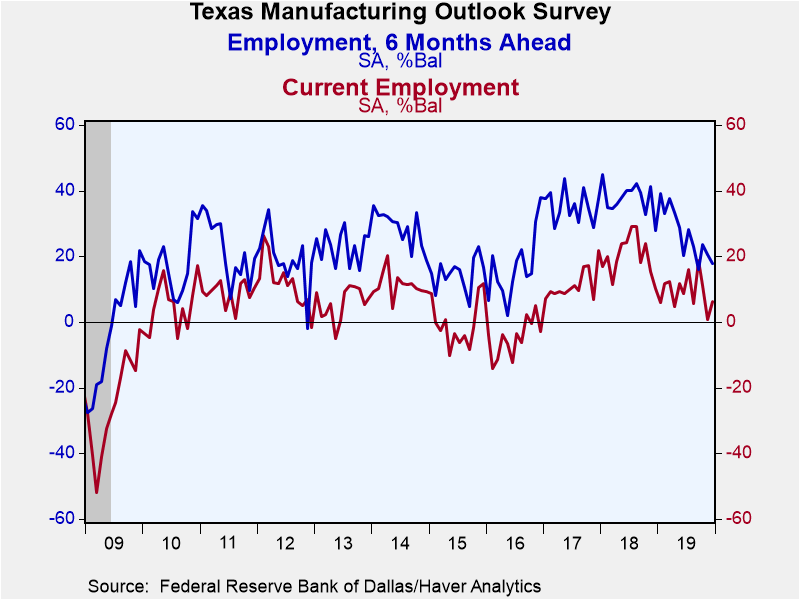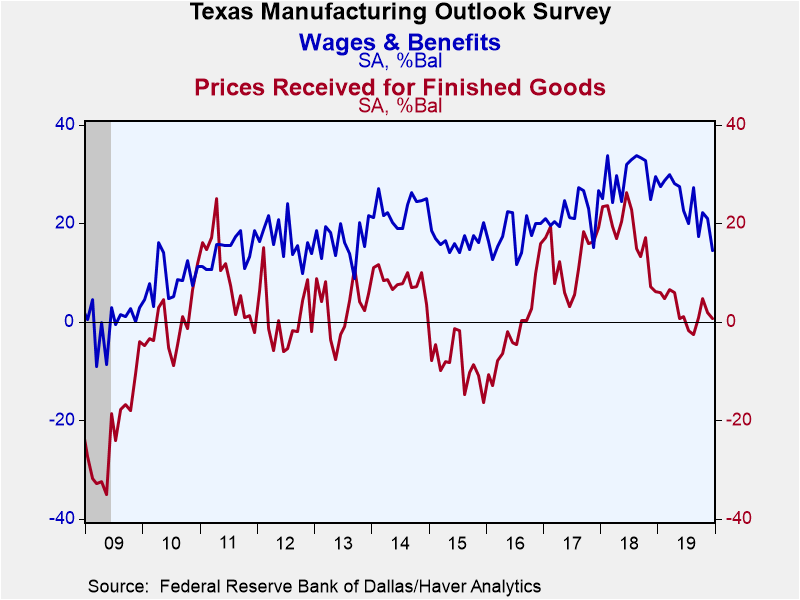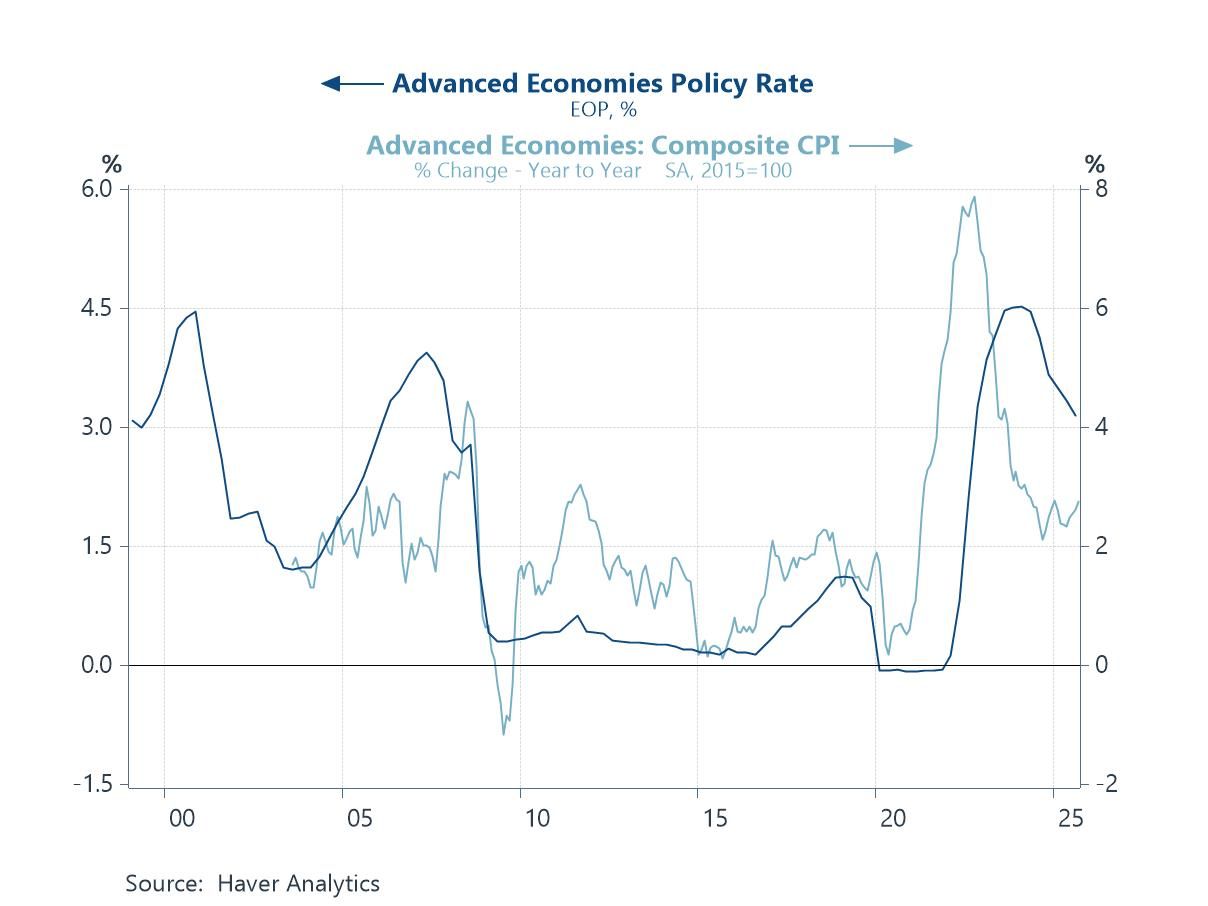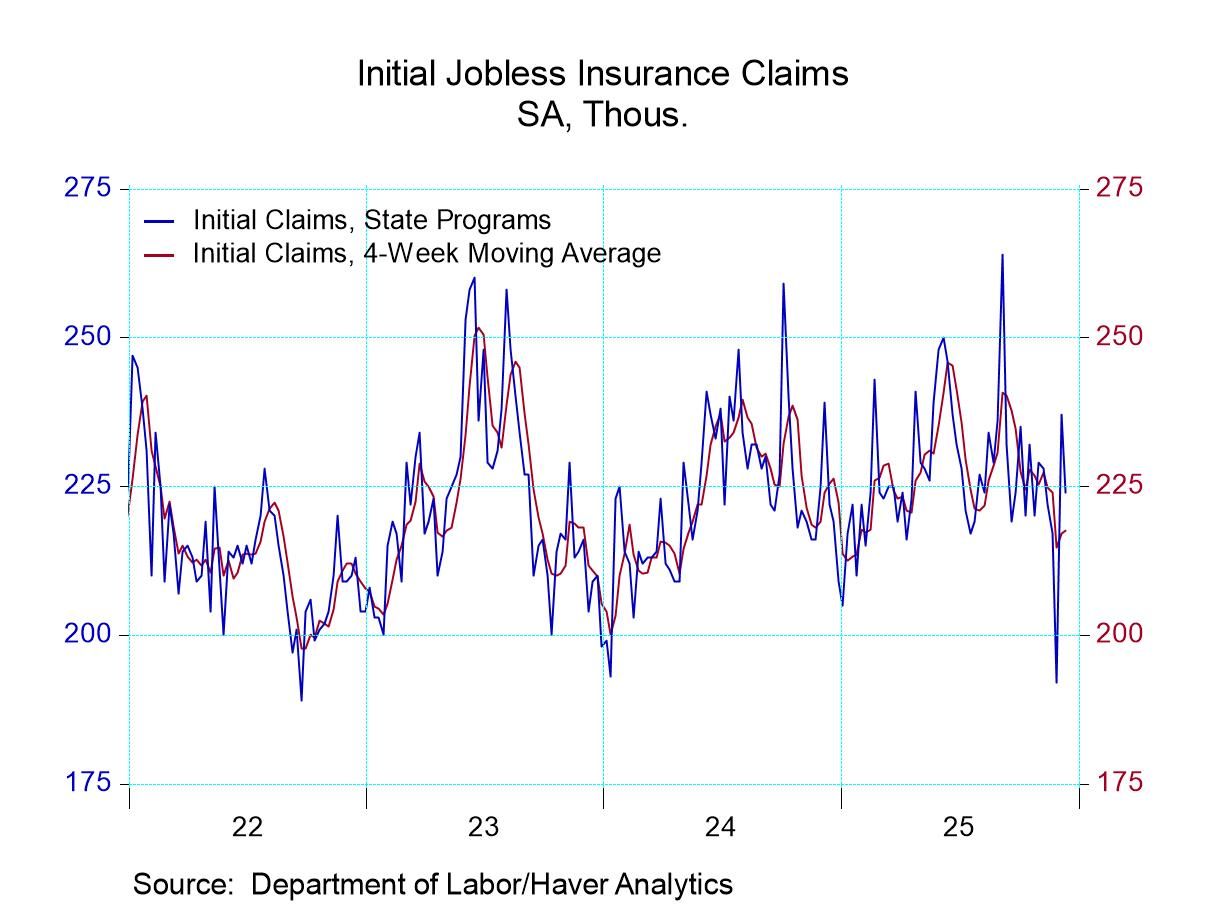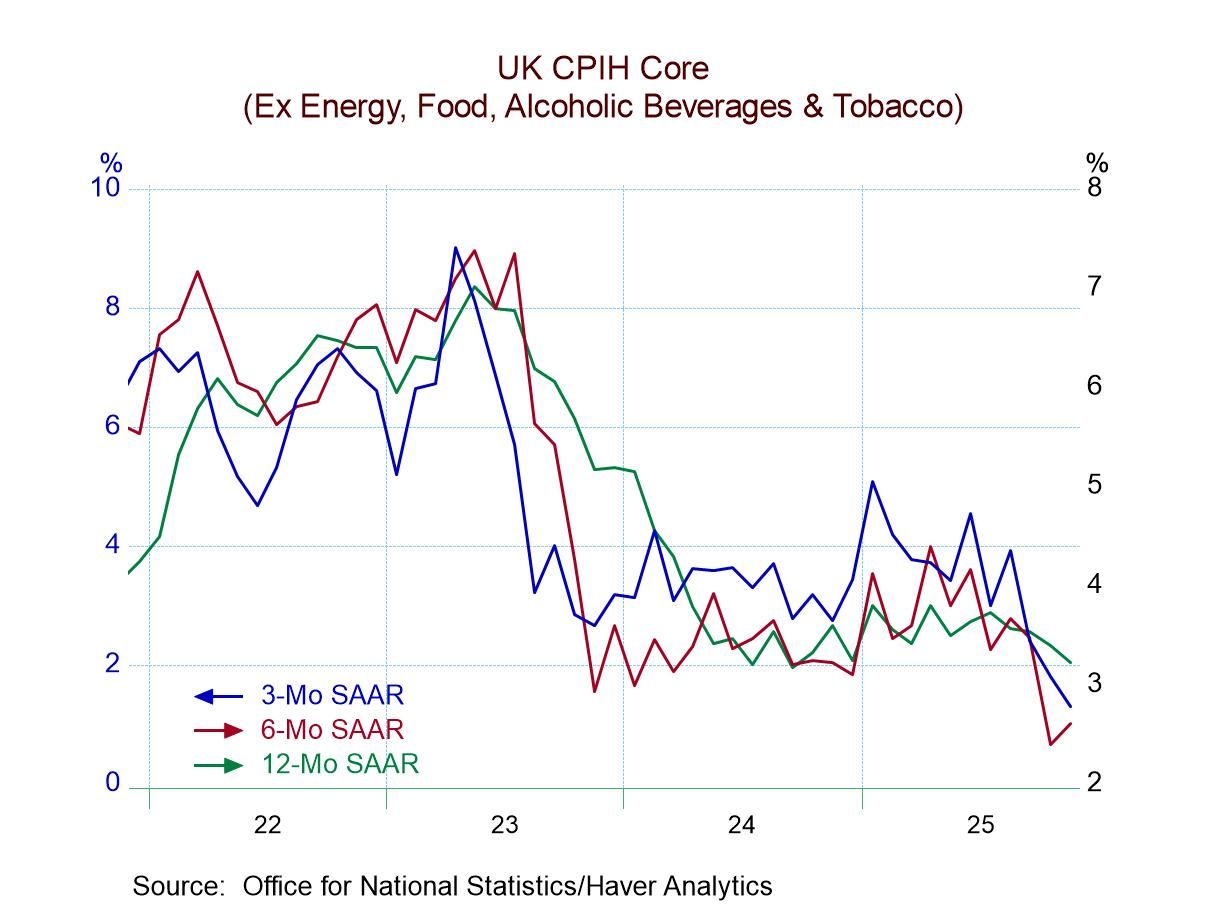 Global| Dec 30 2019
Global| Dec 30 2019Texas Factory Activity Falls Again in December
by:Sandy Batten
|in:Economy in Brief
Summary
The Federal Reserve Bank of Dallas reported in its Texas Manufacturing Outlook Survey that the General Business Activity Index fell in December to -3.2 from -1.3 in November. For this index, zero is the critical value that separates [...]
The Federal Reserve Bank of Dallas reported in its Texas Manufacturing Outlook Survey that the General Business Activity Index fell in December to -3.2 from -1.3 in November. For this index, zero is the critical value that separates expansion from contraction. The December reading, then, indicates that manufacturing activity in Texas continued to fall in December and at a slightly faster rate than in November. For all of Q4, the index fell to -3.2, its third consecutive quarterly average below zero. The company outlook measure, however, rose above zero to 1.3 in December after having fallen to -2.1 in November, the first month below zero since July.
The details of the report were not as weak as the headline figure. The production measure rebounded to 3.6 In December after plummeting to -2.4 in November. New orders continued to fall, but at a slower pace than in November. The December reading was -5.0 versus -9.3 in November. The employment index strengthened to 6.2 in December from a meager 0.9 in November. And shipments rebounded to 3.0 in December from -4.5 the previous month. Wages and benefits continued to rise in December, but at a much slower pace than in the November.
Price measures remained positive, but declined in December from November. The finished goods prices received index fell to 0.7 from 1.9, indicating the finished goods prices are just barely increasing. The prices paid index for raw materials also weakened to 14.5 in December from 17.8 In November.
The index of expected business conditions in six months continued to show expected improvement in activity ahead but that expectations were not as ebullient as in November. The expectations index slipped to 6.4 in December from 7.3 in November. More upbeat, both expected production and orders rose in December from November.
Each index is calculated by subtracting the percentage of respondents reporting a decrease from the percentage reporting an increase. When all respondents report rising activity, the index will register 100. The index will register -100 when all respondents report a decrease. The index will be zero when the number of respondents reporting an increase equals the number reporting a decrease. Items may not add up to 100% because of rounding. Data for the Texas Manufacturing Outlook can be found in Haver's SURVEYS database.
| Texas Manufacturing Outlook Survey (SA, % Balance) | Dec | Nov | Oct | Dec'18 | 2019 | 2018 | 2017 |
|---|---|---|---|---|---|---|---|
| Current General Business Activity Index | -3.2 | -1.3 | -5.1 | -6.9 | -0.7 | 25.8 | 20.6 |
| Production | 3.6 | -2.4 | 4.5 | 6.2 | 9.0 | 21.4 | 20.2 |
| Growth Rate of New Orders | -5.0 | -9.3 | -5.9 | 5.5 | -0.8 | 14.8 | 11.4 |
| Employment | 6.2 | 0.9 | 11.0 | 10.3 | 9.4 | 20.0 | 11.4 |
| Wages & Benefits | 14.6 | 21.1 | 22.2 | 29.5 | 24.0 | 29.7 | 22.2 |
| Prices Received for Finished Goods | 0.7 | 1.9 | 4.8 | 6.2 | 2.4 | 17.6 | 12.7 |
| General Business Activity Index Expected in Six Months | 6.4 | 7.3 | 2.4 | 1.5 | 7.2 | 31.6 | 34.5 |
| Production | 36.9 | 31.3 | 29.6 | 33.3 | 36.1 | 48.5 | 46.8 |
| Growth Rate of New Orders | 26.8 | 19.3 | 26.1 | 22.6 | 25.6 | 35.9 | 37.7 |
| Employment | 17.8 | 20.6 | 23.6 | 27.8 | 26.7 | 37.6 | 35.2 |
| Wages & Benefits | 28.4 | 36.5 | 39.0 | 44.5 | 39.9 | 50.4 | 43.4 |
Sandy Batten
AuthorMore in Author Profile »Sandy Batten has more than 30 years of experience analyzing industrial economies and financial markets and a wide range of experience across the financial services sector, government, and academia. Before joining Haver Analytics, Sandy was a Vice President and Senior Economist at Citibank; Senior Credit Market Analyst at CDC Investment Management, Managing Director at Bear Stearns, and Executive Director at JPMorgan. In 2008, Sandy was named the most accurate US forecaster by the National Association for Business Economics. He is a member of the New York Forecasters Club, NABE, and the American Economic Association. Prior to his time in the financial services sector, Sandy was a Research Officer at the Federal Reserve Bank of St. Louis, Senior Staff Economist on the President’s Council of Economic Advisors, Deputy Assistant Secretary for Economic Policy at the US Treasury, and Economist at the International Monetary Fund. Sandy has taught economics at St. Louis University, Denison University, and Muskingun College. He has published numerous peer-reviewed articles in a wide range of academic publications. He has a B.A. in economics from the University of Richmond and a M.A. and Ph.D. in economics from The Ohio State University.


